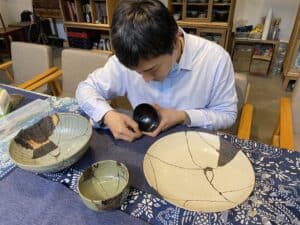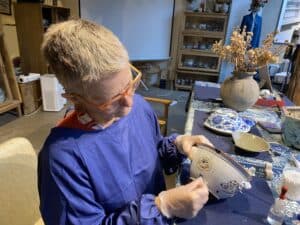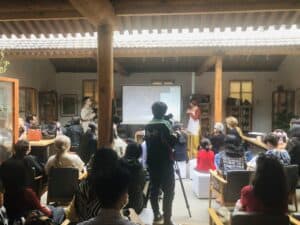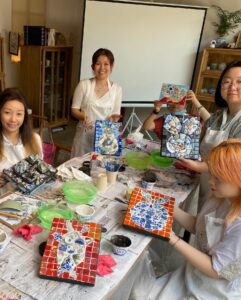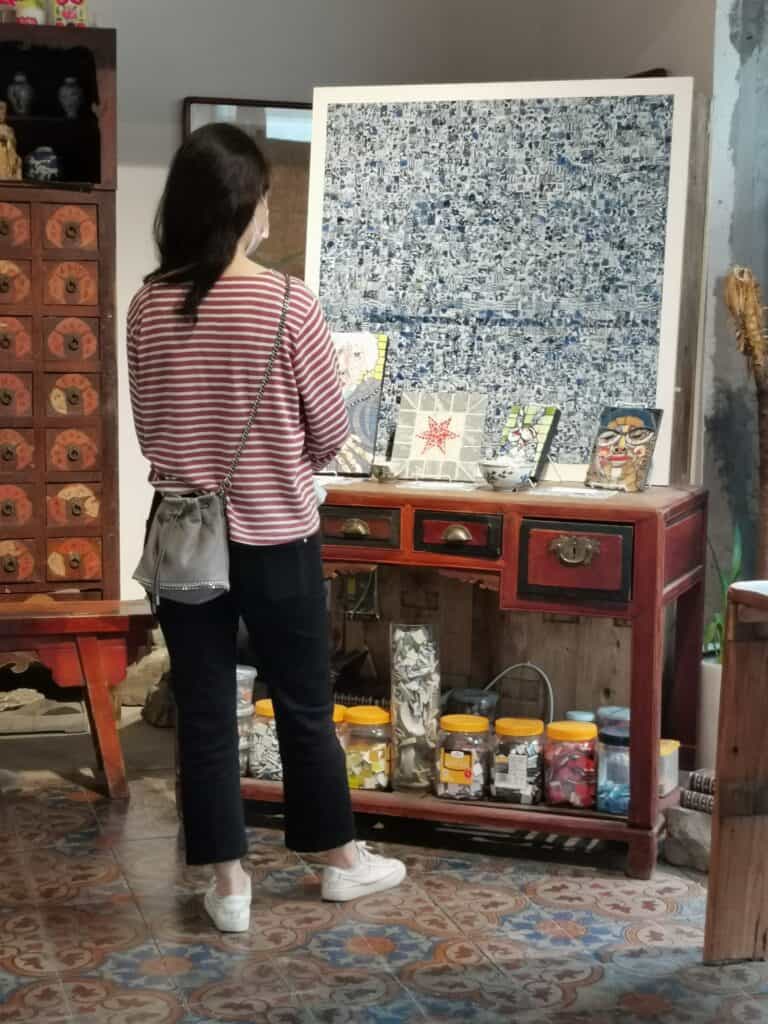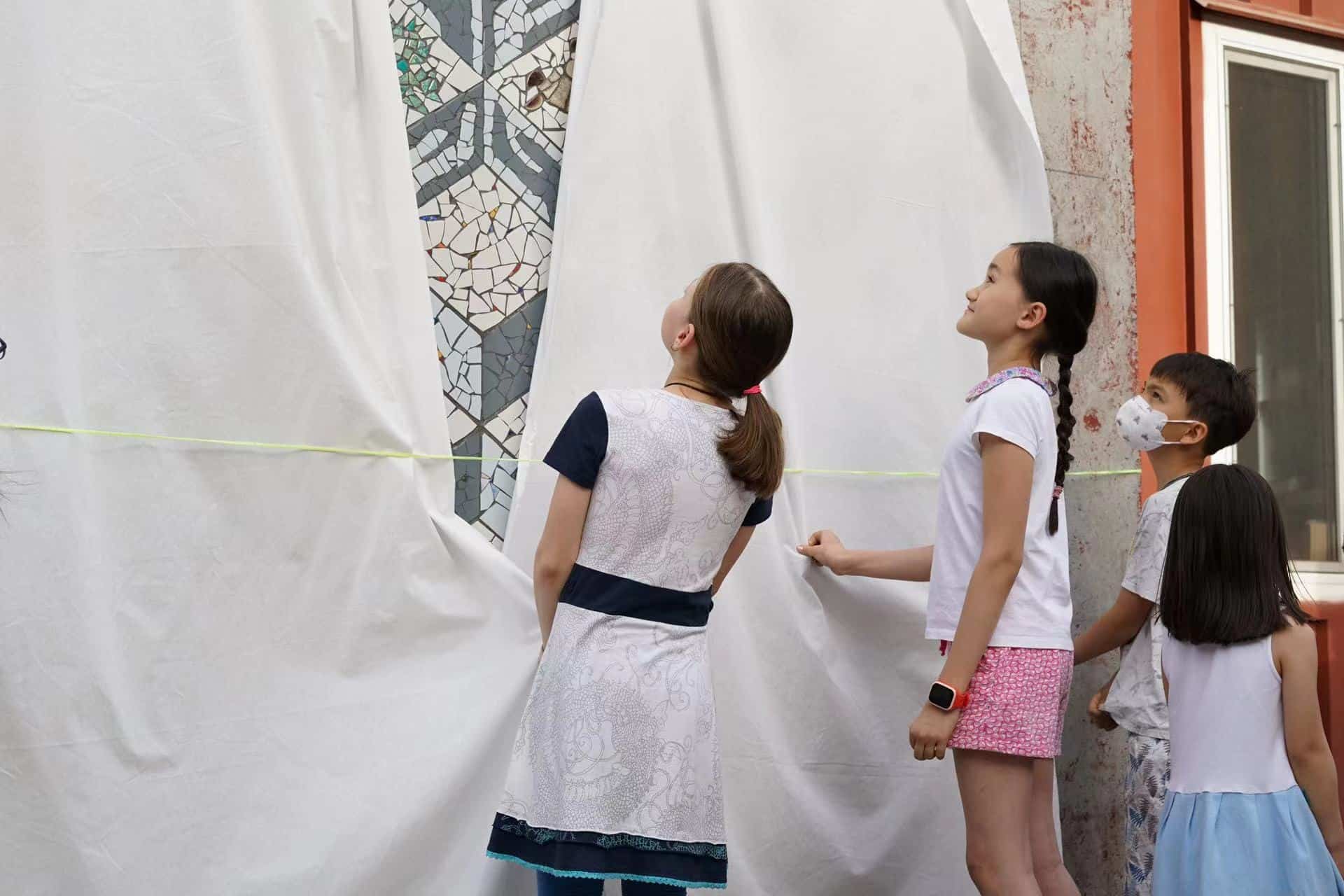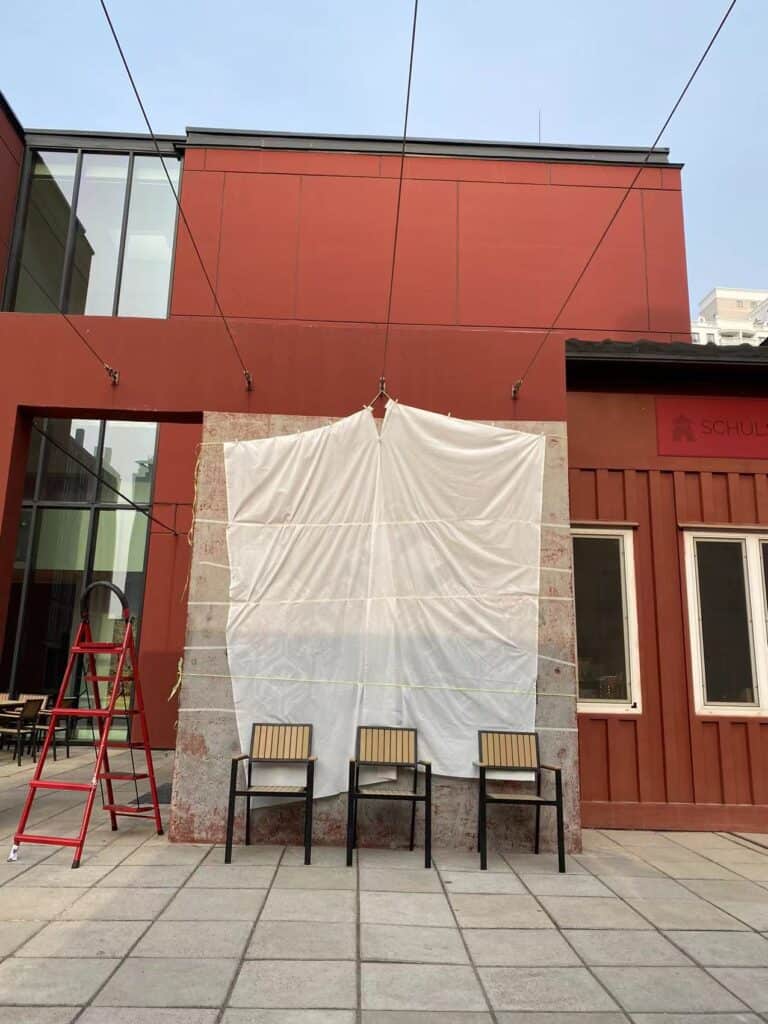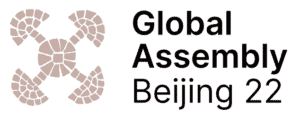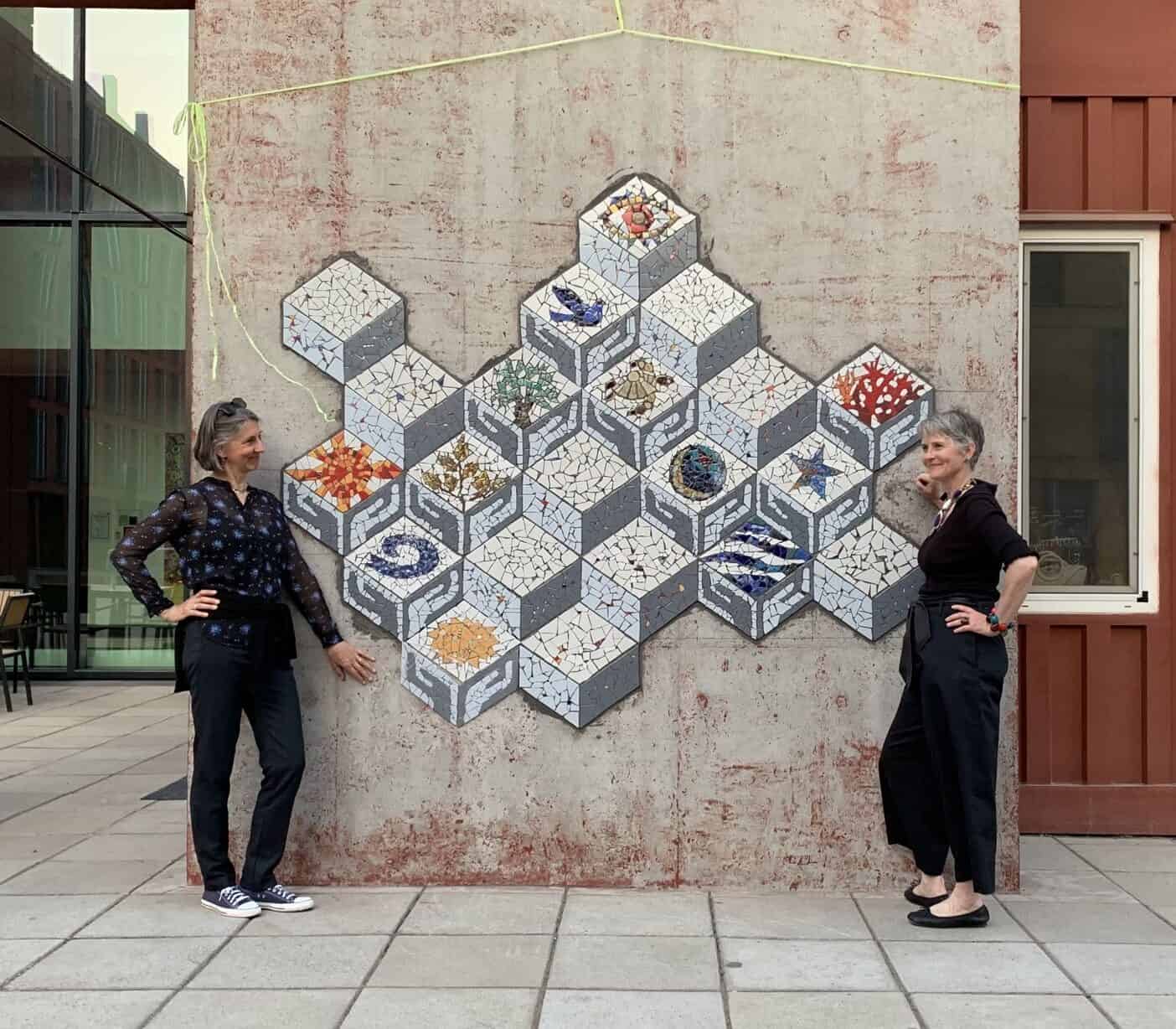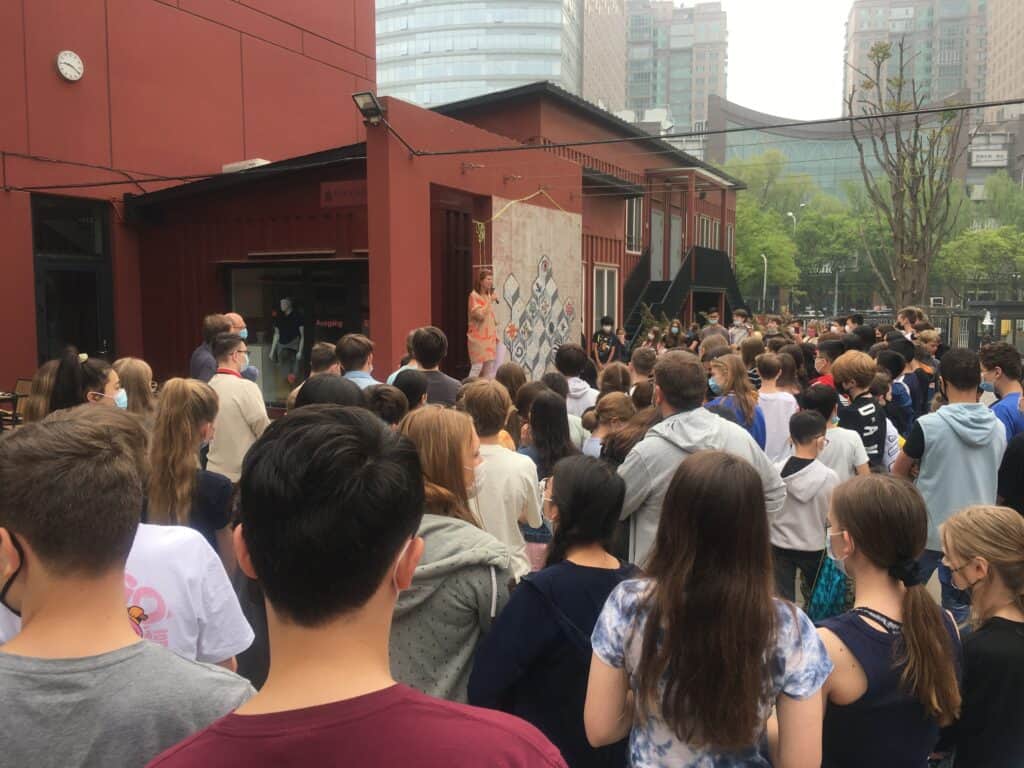As part of my residency to explore the interfaces between mosaic and porcelain craft I went on an excursion to Jingdezhen, the birthplace of porcelain.
We took the train to ride slow into history. Porcelain production started first time in the world in the area around Jingdezhen in the 11 century. Here the craftsmen first experimented with the special earths found in the area that are needed to fire pure white and often delicately thin vessels. It soon became the highly sought and expensively traded “white gold”.
Jingdezhen is a small city in the middle of China. Everyone who has a window to the street sells porcelain or pottery. Even the street lamps are exhibiting porcelain.
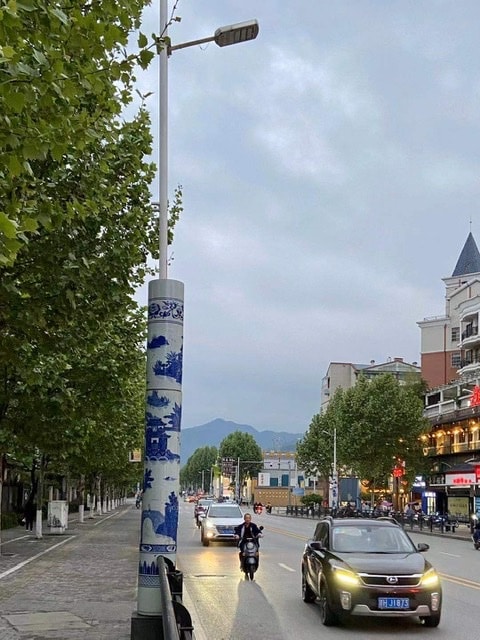
And many citizens of Jingdezhen are producing it. There are the small shaggy type workshops carrying out the traditional art of porcelain production now mainly using casts but painting the pieces still by hand with intricate patterns. And there are modern state owned or private workshops and factories experimenting with new designs and production techniques to maximise revenue.
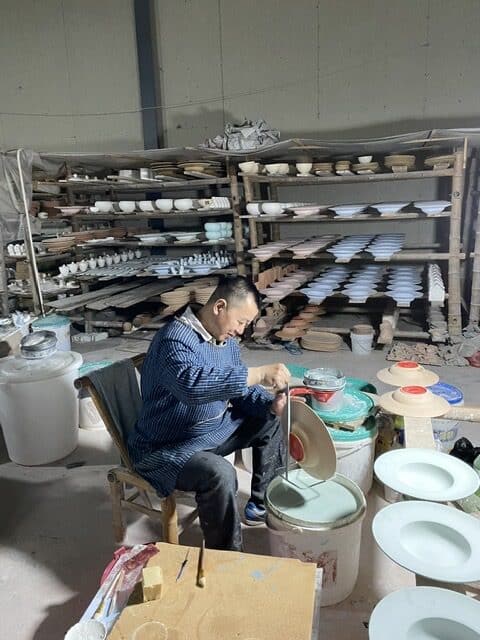
In the workshop of the “White” porcelain brand
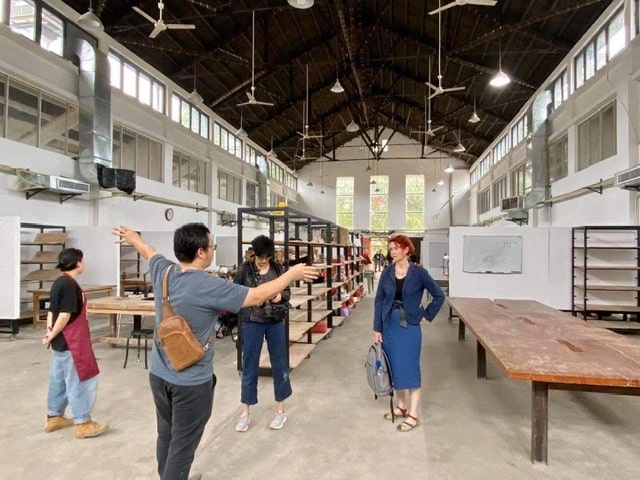
in the workshop of one of the pottery schools in Jingdezhen
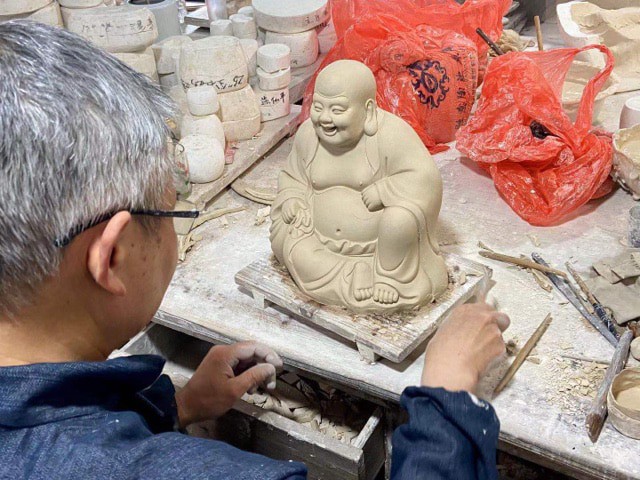
Craftsman making contact with the product of his hands. Photo Kersten von Sohlern
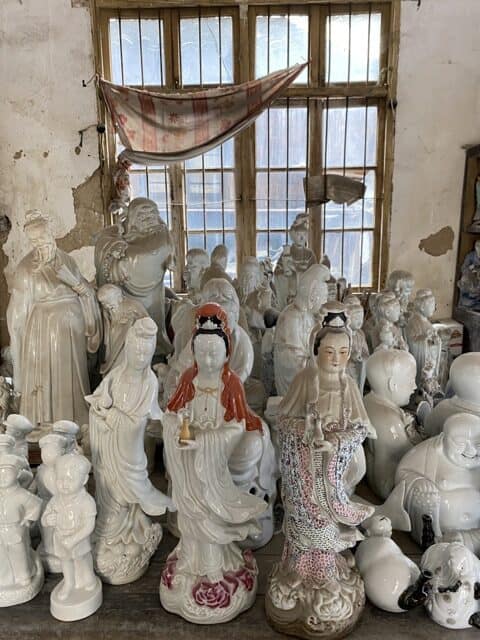
Hand painted porcelain figures
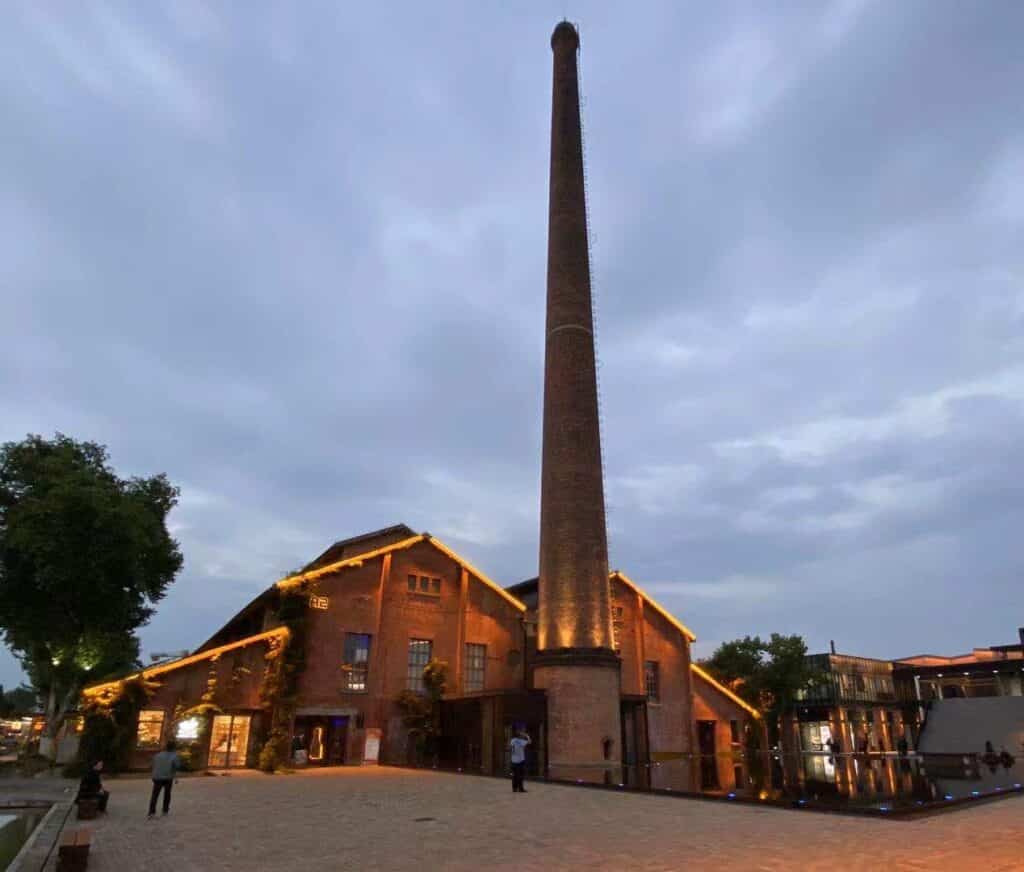
Some old kilns have been transformed into a tourist area with shops and restaurants.
Unfortunately the historic area with the ancient kilns dating back to the 11 century was under reconstruction. See below.
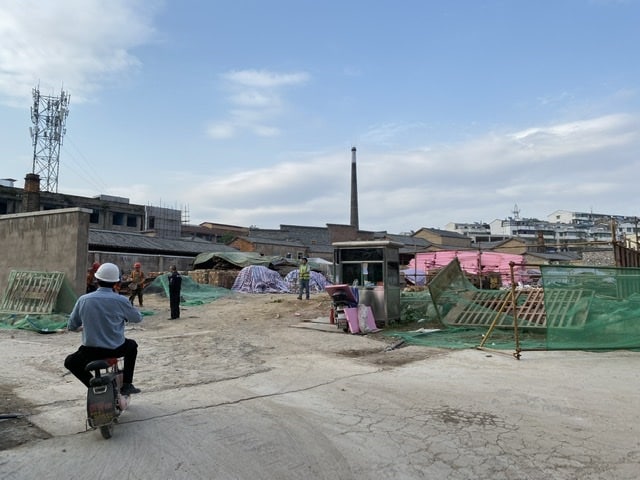
But the large porcelain museum at the city fringe shows a detailed history of porcelain craft on 4 floors.
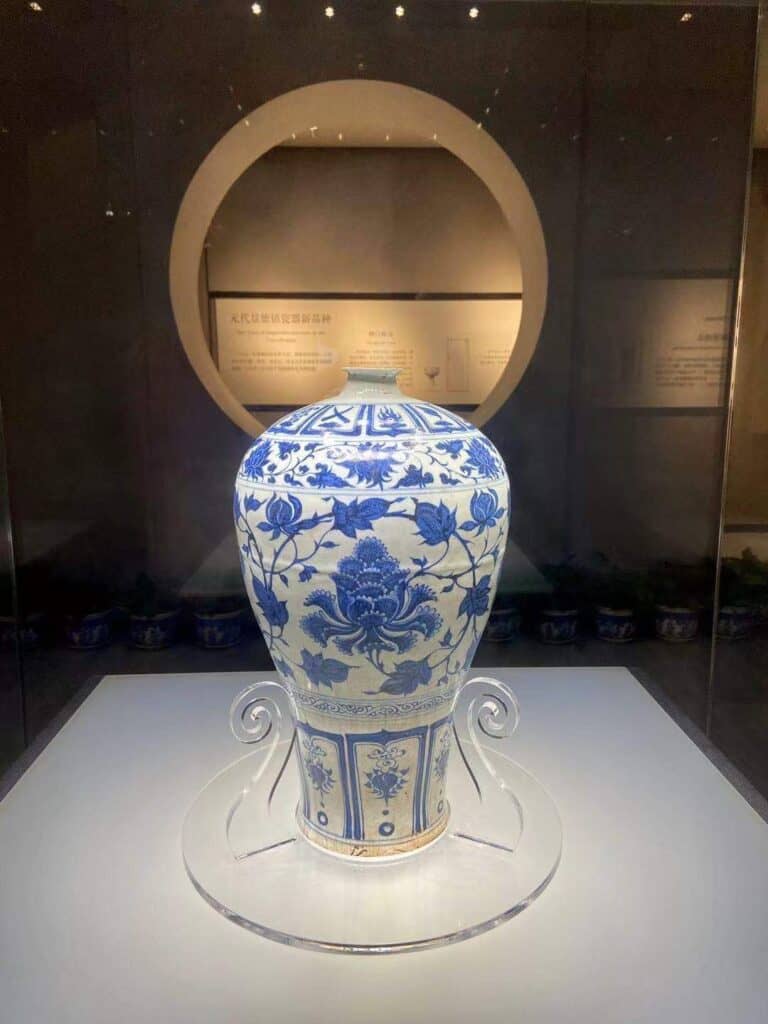
Ming Vase in Jingdezhen Porcelain Museum
It was nice to see the craft very much alive and we could lay hands on the pottery wheel feeling the soft clay molding under our fingers. Click on the image above to see more
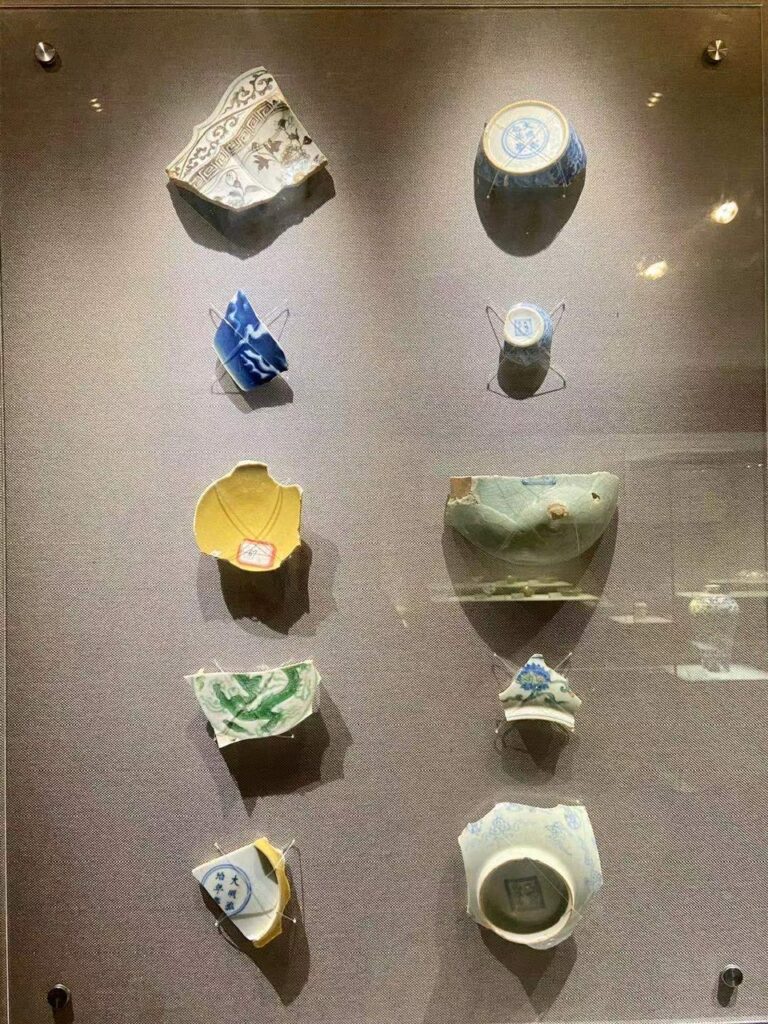
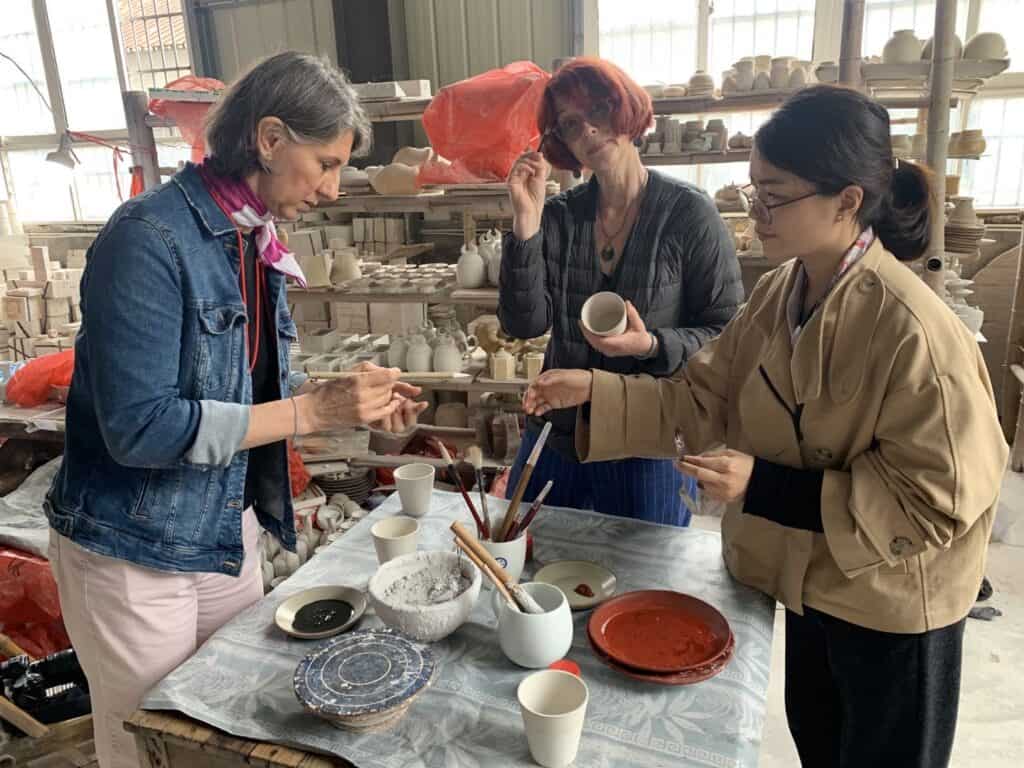
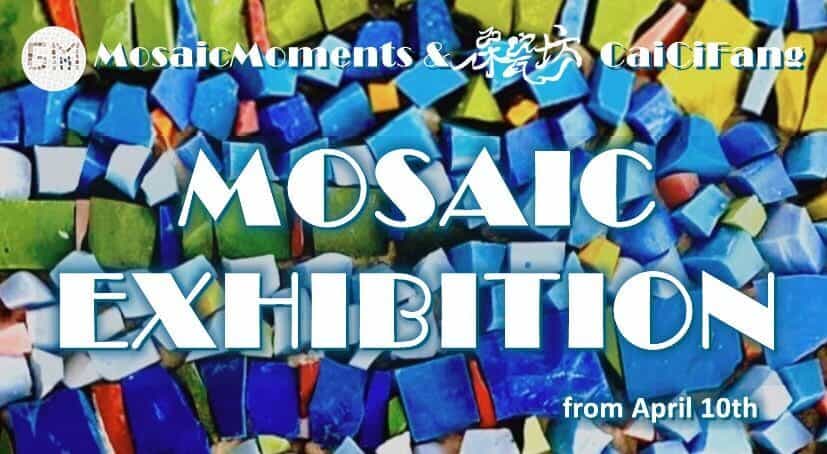
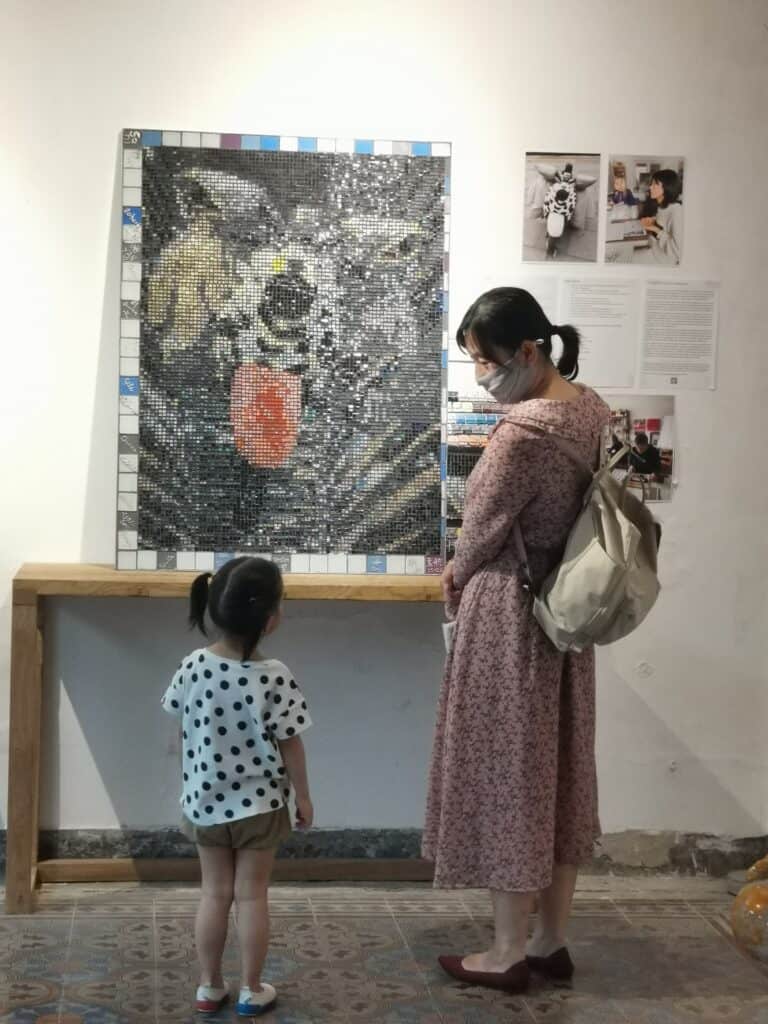
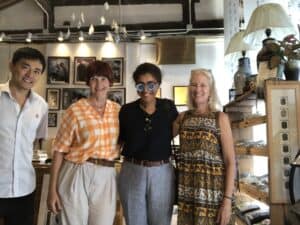 That afternoon we met SuNan the porcelain conservation specialist who is running the visitor service and workshop that the project acquired in the house just opposite. He and his team are creating a very special atmosphere in the old Hutong space – guiding every visitor through the exhibition of ancient porcelain vessels, beautifully kintsugi restored porcelain bowls, old maps, opera costumes and embroidery and guest exhibitions like my mosaics or other local crafts.
That afternoon we met SuNan the porcelain conservation specialist who is running the visitor service and workshop that the project acquired in the house just opposite. He and his team are creating a very special atmosphere in the old Hutong space – guiding every visitor through the exhibition of ancient porcelain vessels, beautifully kintsugi restored porcelain bowls, old maps, opera costumes and embroidery and guest exhibitions like my mosaics or other local crafts.